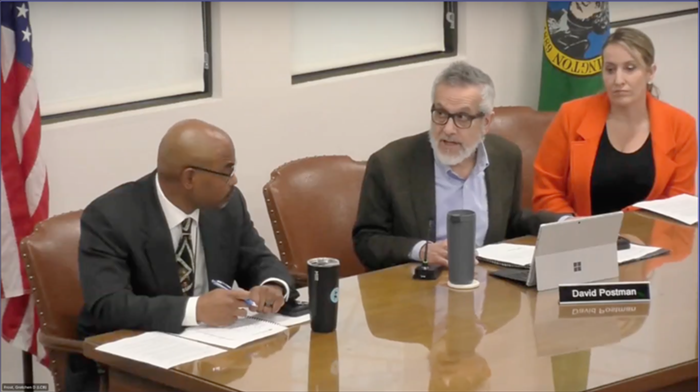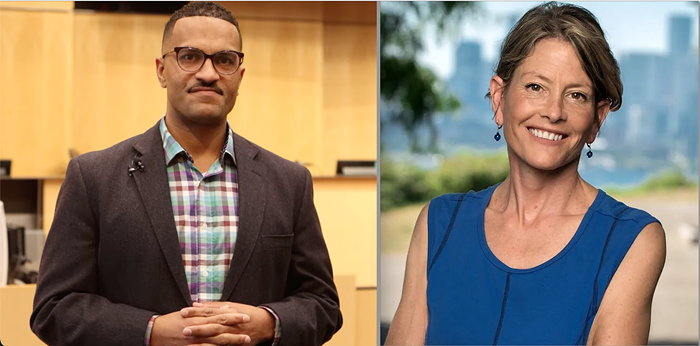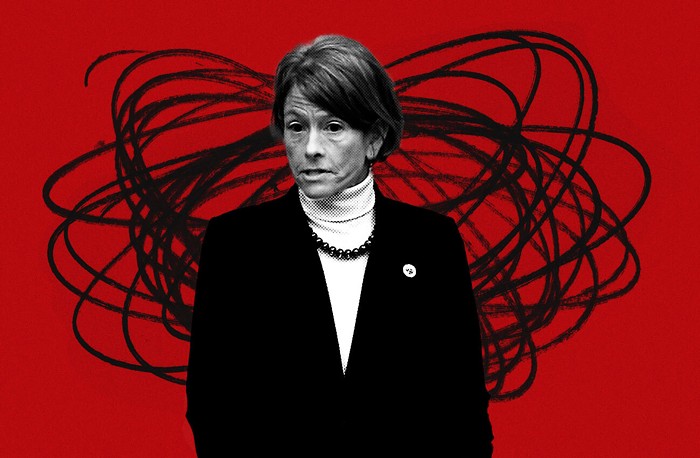Schell should have seen it coming. Earlier in the day, at a Sound Transit finance committee meeting, Finance Chair Greg Nickels expressed concern that Schell's plan (to borrow more money for light rail) would do two bad things. First, he says, it would burden taxpayers with a larger financial commitment than the one they signed on for when they voted for the transit system in 1996. Second, it would endanger the ability to fund the future extension of light rail, known as Phase II. The two phases were originally sold to taxpayers as a package. Phase I, which runs from SeaTac to the U-District, wouldn't be much good without Phase II, which reaches outlying areas. But Schell is so fixated on getting the plan for the project finalized (the deadline is November 18), he doesn't seem to mind the catch-22.
Schell's funding plan involves a fancy math equation known as "lowering debt service coverage ratio" -- which basically means lowering the amount of revenue you need in order to borrow money. Schell wants to lower the "coverage ratio" so that he can get an estimated additional $88-108 million for Phase I. This means that the project would cost taxpayers more money, and it would make it more difficult to pay for Phase II. "I want to point out that our capacity to lower debt coverage without forcing a large Phase II tax increase is very low," Nickels says.
In 1996, voters agreed to pony up $1 billion through a .4 percent sales tax increase and a .3 percent Motor Vehicle Excise Tax increase. (The MVET portion of the Sound Transit tax will not be affected by I-695). It was to be a 10-year commitment. While voters approved these taxes, giving the green light to Phase I, they mandated that Sound Transit had to win the public's approval again when it came time for Phase II. If Schell gets his way and lowers the debt coverage to raise money for Phase I, the public will end up paying a higher tax burden than the original $1 billion, because we'll be paying the tax increases for a longer time.
More importantly, Nickels explains how the plan could undermine Phase II: "The extent to which we borrow more in Phase I takes away our flexibility in Phase II. Sure, the voters can vote for Phase II, but we wouldn't have the financial capacity to do anything about it" -- because we wouldn't have the revenues needed to float more bonds. Nickels points out that leaving the ratio where it is reserves $102 million for future expansion, while lowering the ratio slashes available money to around $33 million.
Nickels isn't the only one raising these concerns. Transit Board Member and King County Council Republican Rob McKenna agrees, saying, "If you bond more now, you're basically tying up a greater percentage of your future income."
But if we don't issue more debt, how will the light rail plan, which is currently short about $210 million, ever get off the ground? asks Jared Smith, the mayor's point man on Sound Transit. While he acknowledges that Phase II will take a "significant" hit if we lower the debt ratio coverage, he says Sound Transit must do everything it can to get Phase I underway. "Are we just going to sit out Phase I and obsess over this one thing?" he asks defensively.


















